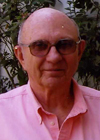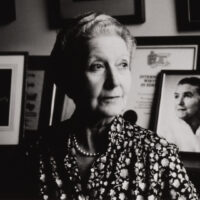
Alumni Spotlight: E. Thomas Stanford
By Elaine Murphy ’96, DMA ’07
E. Thomas Stanford is a Los Angeles native who started college at USC, studied at Juilliard two years, and completed his Bachelor’s Degree at University of California at Berkley in Northern California. In 1951, he returned to study at USC, studied with Leon Kirschner and graduated with a Masters of Music in composition in 1953.
After college, he enlisted in the US army for a two year stint (1953-55). “I wrote to my draft board; I was in Harlem because I was studying at Juilliard. I couldn’t get a job at the time and I figured I would get the army out of the way.”
In 1956 he moved to Mexico. “My Mom left me off in Tijuana. I traveled on my own to Mexico City. It was January 2, 1956; it was my birthday. I signed up for a crash course in Spanish. I actually met my wife the second month I was there in a friend’s office.” Stanford also began his studies at the Universidad Anáhuac.
“I had the GI bill of Rights to help pay for four years of college. I wrote to Carlos Chavez for a recommendation. I had met him when he came to Juilliard when I was a student. Chavez was the head of the Instituto Nacional de Artes de Mexico. He wrote me back. I wanted to get a doctorate and the university was willing.”
While studying in Mexico, Stanford began his field work recording the music of indigenous peoples. In 1959, he began working for the Instituto Nacional de Antropología e Historia. “The [indigenous people] were flabbergasted. They were flattered. It was very easy to do. It is like someone scratching your back. They were enthralled.”
From 1965-1967, he catalogued musical works found in archives. “I catalogued the Cathedral archives both in Mexico City and in Puebla. The catalogue was then published later in 2004. I do not know about calling all of this music Baroque. A lot of it is not Baroque; a lot of it is Rococo. I supervised the microfilm project of over 2000 musical works.” Stanford explains that you cannot simply walk into the archives and that gaining access can be complicated. “The reason I got in was because the microfilm operator has gotten in before and was able to introduce me to someone.” In 1967, Stanford returned to the States and taught at the University of Texas at Austin (1967-1971), and at the University of North Carolina, Greensboro (1971-1978). “I was teaching classes in Ethnomusicology, Music Appreciation and Music History.”
Wanting to continue his research, Stanford returned to Mexico and from 1987-1983 worked for the Dirección General de Culturas Populares. By 1981, he was working with Radio Educación producing a series of 87 radio programs entitled La Musica Poular En Mexico. “In 1983 I taught courses to [indigenous people] who worked as bilingual announcers for the Instituto Nacional Indigenes. They were more than just DJs because they were involved in the production process of the shows.” In 1984, Stanford was invited to join the faculty of the Escuela Nacional de Antropología e Historia. “I had studied linguistics with Morris Swadesh there three and a half years. He was a wonderful person. I had actually started teaching there part time in 1981. I continued until 2004.”
Stanford continued composing through 1997. He has worked extensively with Benjamin Juarez, a leading conductor in Mexico, in helping prepare professional groups for recording by providing transcriptions for early music for performance. His latest commercially available CD project is titled Huapango and recorded for Urtext.

